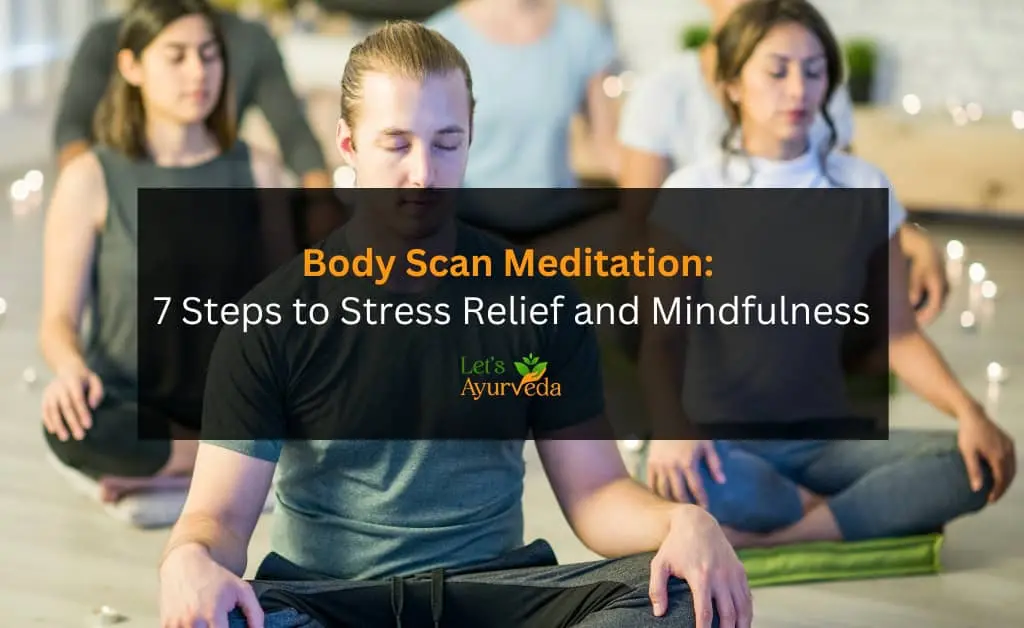Introduction: Why Body Scan Meditation Matters
Do you ever feel overwhelmed by stress or disconnected from your body? Life’s constant demands can leave us feeling like we’re on autopilot, ignoring the signals our body sends us daily. That’s where Body Scan Meditation comes in—a mindfulness practice that helps you reconnect with your body and calm your mind. It’s not just a trendy buzzword; science backs its power to improve mental and physical well-being.
In this guide, we’ll dive into everything you need to know about Body Scan Meditation, from what it is to how to practice it effectively. Whether you’re a beginner or looking to deepen your mindfulness journey, this step-by-step approach will help you unlock the benefits of this simple yet transformative practice.
What Is Body Scan Meditation?
Body Scan Meditation is a mindfulness technique that involves systematically focusing on different parts of your body. The goal is to bring awareness to physical sensations, tension, or discomfort without judgment.
Unlike other forms of meditation, which may emphasize breath or mantra, the body scan centers your attention on how your body feels, helping you build a stronger mind-body connection.
Key Benefits of Body Scan Meditation:
-
Stress Reduction: Regular practice can lower cortisol levels, the hormone responsible for stress.
-
Improved Sleep: Studies show it can reduce insomnia symptoms by calming the nervous system.
-
Pain Management: It’s often used in clinical settings to help patients manage chronic pain.
-
Enhanced Awareness: It increases mindfulness, helping you stay present in daily life.
How Does Body Scan Meditation Work?
This meditation works by engaging your brain’s prefrontal cortex, the part responsible for focus and decision-making. As you bring your attention to different parts of your body, you activate areas in the brain that reduce stress and promote relaxation.
The practice also taps into the parasympathetic nervous system—your body’s natural “rest and digest” mode—helping to slow your heart rate, lower blood pressure, and calm your mind.
How to Practice Body Scan Meditation: A Step-by-Step Guide
Step 1: Prepare Your Space
Find a quiet and comfortable place where you won’t be disturbed. You can lie down on a yoga mat, sit on a chair, or recline in bed.
Step 2: Set Your Intention
Before starting, take a moment to set an intention. Ask yourself why you’re practicing—whether it’s to relax, reduce stress, or simply reconnect with your body.
Step 3: Focus on Your Breath
Begin by taking a few deep breaths. Inhale through your nose for four counts, hold for two, and exhale through your mouth for six counts. This rhythmic breathing helps signal your body to relax.
Step 4: Start at the Top
Bring your attention to the top of your head. Notice any sensations—tingling, warmth, or tension. Don’t try to change anything; simply observe.
Step 5: Move Gradually Down
Shift your focus to your forehead, eyes, cheeks, and jaw. Then, move to your neck, shoulders, and arms. Continue this process, scanning each part of your body down to your toes.
Step 6: Notice and Release Tension
If you notice tension, visualize it melting away with each exhale. This helps create a sense of relaxation and ease.
Step 7: Finish with Gratitude
Once you’ve completed the scan, take a moment to appreciate your body for all it does for you. End your practice by slowly bringing your awareness back to the room.
Practical Tips for Beginners
-
Start Small: Begin with 5-10 minutes and gradually increase the duration as you become more comfortable.
-
Use Guided Sessions: Apps like Headspace or Insight Timer offer guided body scan meditations to help you stay on track.
-
Be Patient: It’s normal for your mind to wander. Gently bring your focus back to the practice without frustration.
-
Stay Consistent: Practicing regularly—even for a few minutes a day—yields better results over time.
Real-Life Applications of Body Scan Meditation
Body Scan Meditation isn’t just for quiet moments—it’s a tool you can use throughout your day:
-
Before Sleep: Struggling to fall asleep? A quick body scan can help calm your mind and prepare you for rest.
-
During Stressful Situations: Feeling overwhelmed? A 5-minute body scan can center your mind and reduce tension.
-
Post-Workout Recovery: Use the practice to notice and release tightness in muscles after physical activity.
Body Scan Meditation vs. Other Mindfulness Techniques
|
Aspect |
Body Scan Meditation |
Breath Meditation |
Loving-Kindness Meditation |
|---|---|---|---|
|
Focus Area |
Physical sensations |
Breathing |
Emotions and compassion |
|
Main Benefit |
Stress relief, pain management |
Increased focus, relaxation |
Improved empathy, emotional health |
|
Ideal For |
Beginners and those with body tension |
Anyone seeking calmness |
Those wanting to foster connection |
Frequently Asked Questions
Q1: Do I need any special tools or skills to start?
Nope! All you need is a quiet space and a willingness to practice mindfulness.
Q2: How often should I practice?
Daily practice is ideal, but even 3-4 times a week can deliver noticeable benefits.
Q3: What if I fall asleep during the practice?
That’s okay! Falling asleep often indicates that your body truly needs rest.
Final Thoughts: Your Next Steps
Body Scan Meditation is a powerful yet simple practice that anyone can incorporate into their daily routine. By regularly connecting with your body, you can reduce stress, improve sleep, and enhance overall well-being.
Ready to give it a try? Start small and see how this mindfulness technique can transform your life. Share your experience with friends, and let’s spread the calm together!
Action Tip: Try a 5-minute body scan today and notice how you feel afterward. Share your thoughts in the comments or with someone who might benefit from this practice.
Also Read: A Guide to Sound of Silence Meditation






